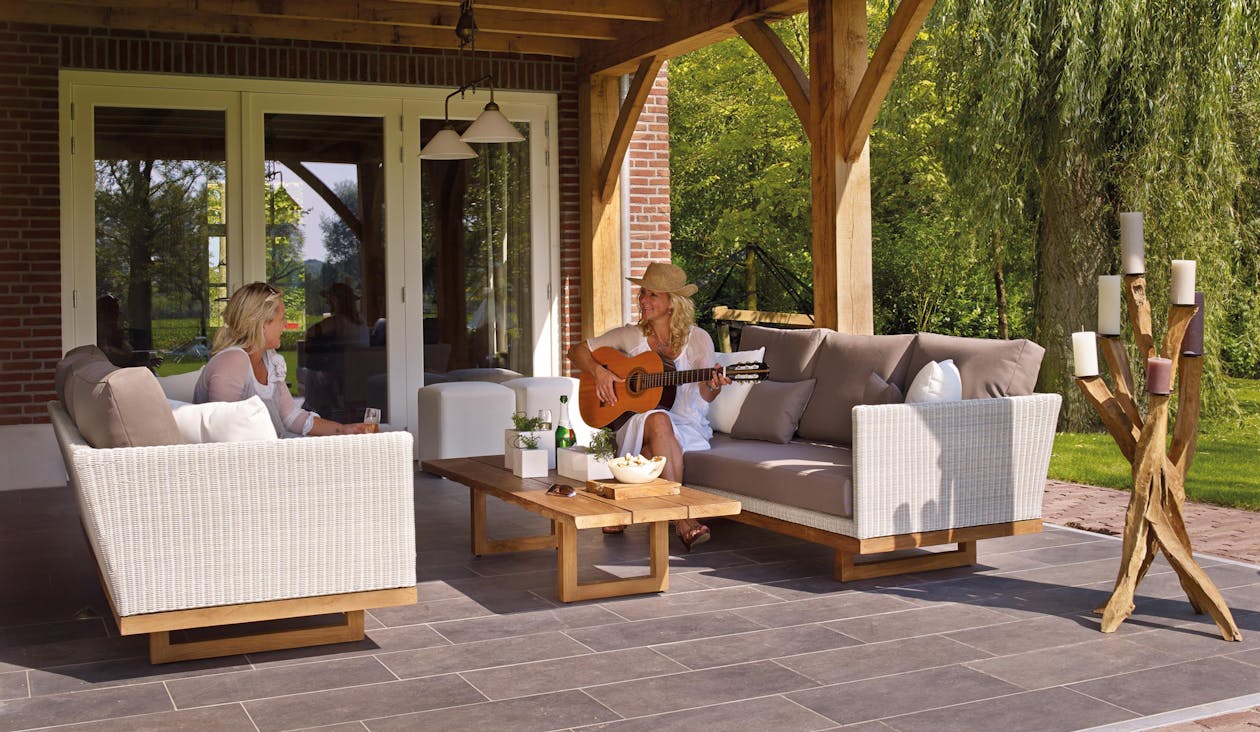
Transform Your Space With DIY Custom Home Design Ideas
Are you looking to breathe new life into your living spaces? Custom home design offers endless possibilities to transform your house into a personalized haven. This article will explore innovative ideas for walls, ceilings, and bathrooms that can turn ordinary rooms into your favorite spaces. You'll discover practical DIY solutions and creative design concepts to maximize every corner of your home. By the end, you'll have the inspiration and knowledge to start your own custom home makeover project.
Key Takeaways
Custom home design empowers homeowners to create personalized living spaces through style preferences and space planning
DIY solutions offer cost-effective ways to customize interiors using affordable materials and wall treatment techniques
Outdoor living areas can be enhanced with functional patios, integrated landscaping, and raised garden beds
Small spaces can be maximized using multi-functional furniture, smart storage, and vertical design techniques
Sustainable practices in custom homes include eco-friendly materials, energy-efficient solutions, and passive design elements
Create Your Vision With Custom Home Design Ideas

Custom home design ideas empower homeowners to create their ideal living spaces. Individuals can transform their homes by defining style preferences, understanding space planning, choosing focal points, and incorporating personal touches. Using design apps and exploring home improvement techniques help bring architectural visions to life. Innovative tile designs can add unique flair to any custom home project.
Define Your Style Preferences
Defining style preferences is crucial when creating a custom home design. Homeowners should consider their desired aesthetic for each space, from the dining room to the living areas. This process involves selecting floor materials, choosing artwork, and deciding on overall themes. Individuals can guide their renovation efforts by clearly identifying these preferences and creating a cohesive, personalized living environment.
Understand the Importance of Space Planning
Space planning is a critical aspect of custom home design, influencing both functionality and aesthetics. Homeowners should consider how they use each room, ensuring efficient flow between spaces. Proper placement of key elements like fireplaces, wood flooring, and paint colors can create a harmonious interior design. Utilizing online tools can provide inspiration for innovative space planning ideas, helping homeowners maximize their living areas while reflecting their personal style.
Choose a Focal Point for Your Space
Selecting a focal point is essential in custom home design, particularly for spaces like the bedroom. This element serves as the visual anchor, guiding the overall aesthetics and color scheme of the interior. Homeowners can create a striking focal point through minimalism, using a bold piece of artwork or a statement headboard to draw attention and define the room's character:
Choose a large, eye-catching piece of art
Install a unique, textured accent wall
Use a statement light fixture as a centerpiece
Create a cozy reading nook with a distinctive chair
Incorporate a dramatic floor-to-ceiling window
Incorporate Personalized Touches
Personalized touches in custom home design bring character to spaces like the living room and laundry area. Homeowners can incorporate antique pieces for a unique flair or install custom lighting to set the mood. These personal elements transform a house into a home, reflecting the owner's style and creating a welcoming space.
Embrace DIY Solutions for Interior Spaces

DIY solutions offer cost-effective ways to customize interior spaces. Homeowners can select affordable materials for projects, learn wall treatment techniques, and plan custom furniture. Utilizing reclaimed or upcycled materials adds unique character to rooms. These approaches allow individuals to transform their kitchen, furniture, shower, and other areas while staying within budget. Practical tips help achieve professional-looking results in various home improvement projects.
Select Affordable Materials for Your Projects
Selecting affordable materials is key for budget-friendly custom home projects. Homeowners can explore options like reclaimed wood, recycled glass tiles, or laminate countertops to achieve stylish results without breaking the bank. Local salvage yards often offer unique, low-cost items that add character to spaces, while online marketplaces provide access to discounted building materials and fixtures.
Learn Techniques for Effective Wall Treatments
Wall treatments offer an effective way to transform interior spaces without major renovations. Homeowners can learn techniques like stenciling, color washing, and textured painting to create unique wall finishes. These methods allow for personalized designs that reflect individual style and enhance room ambiance. Some popular wall treatment techniques include:
Sponge painting for a textured effect
Applying wallpaper for bold patterns
Creating faux finishes like marble or wood grain
Using washi tape for geometric designs
Installing shiplap for a rustic look
Plan and Create Custom Furniture
Creating custom furniture allows homeowners to design pieces that perfectly fit their spaces and style preferences. Individuals can achieve unique designs by planning and building their own furniture while saving money. This process involves selecting materials, drafting plans, and using woodworking techniques to construct one-of-a-kind items. Here are some steps to plan and create custom furniture:
Measure the space and determine furniture dimensions
Sketch design ideas and create detailed plans
Choose appropriate materials for the project
Gather necessary tools and equipment
Follow step-by-step construction processes
Apply finishes to protect and enhance the piece
Utilize Reclaimed or Upcycled Materials
Utilizing reclaimed or upcycled materials offers homeowners a unique way to add character to their custom spaces. Old barn wood can be repurposed into rustic shelving or accent walls, while vintage doors can become stylish room dividers. Salvaged hardware, such as doorknobs or light fixtures, adds a touch of history to modern interiors. This approach not only creates one-of-a-kind design elements but also promotes sustainability in home improvement projects.
Enhance Your Outdoor Living Areas

Enhancing outdoor living areas expands a home's usable space and adds value. This section covers designing functional patios and decks, integrating landscaping with home design, creating outdoor rooms for relaxation, and building raised garden beds. These ideas help homeowners maximize their outdoor spaces, blending functionality with aesthetics for a more enjoyable living environment.
Design Functional Patios and Decks
Functional patios and decks extend living spaces outdoors, offering homeowners areas for relaxation and entertainment. These outdoor structures blend form with function, incorporating elements like built-in seating, fire pits, and outdoor kitchens. Designers consider factors such as sun exposure, privacy, and traffic flow to create optimal layouts. Materials like composite decking or stamped concrete offer durability and style:
Incorporate multi-level designs for distinct zones
Install weather-resistant lighting for evening use
Add pergolas or awnings for shade
Include storage solutions for outdoor equipment
Use low-maintenance plants for greenery and privacy
Integrate Landscaping With Home Design
Integrating landscaping with home design creates a seamless transition between indoor and outdoor spaces. Homeowners can use native plants to complement their home's architecture and color scheme. Thoughtful placement of trees and shrubs enhances privacy and provides natural shading, reducing energy costs. Water features like fountains or ponds add a calming element to the landscape, while outdoor lighting highlights architectural details and extends usability into the evening hours.
Create Outdoor Rooms for Relaxation
Creating outdoor rooms for relaxation extends living spaces beyond the home's walls. Homeowners can design cozy seating areas with comfortable furniture, outdoor rugs, and throw pillows to mimic indoor comfort. Adding a pergola or gazebo provides shade and structure, while outdoor curtains or screens offer privacy. Incorporating elements like a small water feature or fire pit enhances the ambiance, creating a peaceful retreat for unwinding and enjoying nature.
Build Raised Garden Beds for Practicality
Raised garden beds offer practical solutions for homeowners looking to enhance their outdoor spaces. These elevated planting areas provide better soil drainage, reduce back strain during gardening, and allow for easier pest control. Homeowners can customize the size and height of raised beds to fit their specific needs, using materials like wood, stone, or recycled plastic. Individuals create functional and attractive outdoor areas that blend seamlessly with their custom home design by incorporating raised garden beds.
Maximize Small Spaces With Creative Design

Maximizing small spaces in custom homes requires creative design strategies. This section explores multi-functional furniture options, smart storage solutions, color and light techniques to create the illusion of space, and vertical design methods. These approaches help homeowners optimize limited areas, making them feel larger and more functional while maintaining style and comfort.
Explore Multi-Functional Furniture Options
Multi-functional furniture offers innovative solutions for small spaces in custom homes. Homeowners can select pieces for dual purposes, such as ottomans with hidden storage or murphy beds that fold into the wall. Coffee tables with adjustable heights transform into dining surfaces, while expandable consoles can accommodate extra guests. These versatile options maximize floor space and adapt to changing needs, allowing residents to enjoy both style and functionality in compact areas.
Implement Smart Storage Solutions
Smart storage solutions maximize space in small custom homes. Built-in shelving units, under-stair storage, and ceiling-mounted racks effectively utilize vertical space. Homeowners can install pull-out pantries, hidden drawer compartments, and slide-out cabinets to optimize kitchen storage. In bedrooms, platform beds with built-in drawers and closet organizers help keep belongings tidy and accessible.
Use Color and Light to Create an Illusion of Space
Color and light play crucial roles in creating the illusion of space in small custom homes. Light colors on walls and ceilings reflect more light, making rooms feel larger and airier. Homeowners can use strategically placed mirrors to bounce light around the room, enhancing brightness and depth. Proper lighting fixtures, including recessed lights and wall sconces, eliminate dark corners and create a sense of openness.
Consider Vertical Design Techniques
Vertical design techniques maximize space in small custom homes. Homeowners can install floor-to-ceiling shelving units, use tall bookcases, and hang plants from the ceiling to draw the eye upward. Wall-mounted desks and folding tables save floor space while providing functional work areas. Loft beds or mezzanine levels create additional living space underneath, perfect for home offices or reading nooks.
Incorporate Sustainable Practices in Design

Incorporating sustainable practices in custom home design benefits both homeowners and the environment. This section explores eco-friendly materials and finishes, energy-efficient solutions, water conservation plans, and passive design elements for climate control. These strategies help create homes that are environmentally responsible and cost-effective to maintain.
Select Eco-Friendly Materials and Finishes
Selecting eco-friendly materials and finishes is a key aspect of sustainable custom home design. To reduce environmental impact, homeowners can choose recycled glass countertops, bamboo flooring, or reclaimed wood for furniture. Low-VOC paints and natural insulation materials like sheep's wool or recycled denim improve indoor air quality. These choices benefit the environment and create healthier living spaces for residents.
Implement Energy-Efficient Solutions
Energy-efficient solutions play a key role in sustainable custom home design. Homeowners can install high-performance windows, LED lighting, and energy-star appliances to reduce power consumption. Smart thermostats and home automation systems optimize energy use, while solar panels or geothermal systems provide renewable energy sources. These measures not only lower utility bills but also minimize the home's carbon footprint:
Install double-pane or triple-pane windows for better insulation
Use programmable thermostats to regulate temperature efficiently
Implement zoned heating and cooling systems
Choose energy-efficient appliances and electronics
Incorporate skylights or solar tubes for natural lighting
Create a Water Conservation Plan
Creating a water conservation plan in custom home design helps reduce water usage and environmental impact. Homeowners can install low-flow fixtures, dual-flush toilets, and water-efficient appliances to minimize consumption. Rainwater harvesting systems and greywater recycling technologies allow for reuse of water in landscaping and non-potable applications. Drought-resistant landscaping and smart irrigation systems further contribute to water conservation efforts, creating sustainable and cost-effective homes.
Use Passive Design Elements for Climate Control
Passive design elements play a crucial role in climate control for custom homes. Builders orient houses to maximize natural light and warmth from the sun, using large windows on south-facing walls in colder climates. Thermal mass materials like concrete floors or stone walls absorb heat during the day and release it at night, maintaining comfortable temperatures. Proper insulation and strategic placement of shading devices further enhance energy efficiency, reducing reliance on artificial heating and cooling systems.
Find Inspiration and Resources for Your Project

Finding inspiration and resources is essential for custom home design projects. This section explores online platforms for ideas, local workshops for hands-on learning, collaborations with artisans and designers, and methods to document progress. These resources help homeowners gather inspiration, develop skills, and create unique spaces that reflect their personal style.
Identify Online Platforms for Ideas and Templates
Online platforms offer a wealth of ideas and templates for custom home design projects. Websites like Pinterest, Houzz, and Instagram provide visual inspiration through user-generated content and professional portfolios. Design blogs and forums allow homeowners to explore trends, ask questions, and share experiences. Many home improvement retailers offer online design tools and virtual room planners, helping users visualize their ideas before implementation.
Attend Local Workshops and DIY Classes
Local workshops and DIY classes offer hands-on learning experiences for homeowners interested in custom home design. These events provide practical skills in areas such as painting techniques, furniture restoration, and basic carpentry. Attendees can learn from experts, practice new methods, and gain confidence in tackling home improvement projects. Many home improvement stores, community centers, and local artisans offer these classes, providing valuable resources for those looking to enhance their custom home design skills.
Collaborate With Local Artisans and Designers
Collaborating with local artisans and designers enhances custom home projects. Homeowners can tap into local expertise for unique pieces like hand-crafted furniture or custom light fixtures. These collaborations often result in one-of-a-kind elements that reflect the area's character and the homeowner's personal style. By working with local talent, individuals support their community's creative economy while adding distinctive touches to their living spaces.
Document Your Progress and Share Online
Documenting progress and sharing online allows homeowners to track their custom design journey and inspire others. They can create blogs or social media accounts dedicated to their home projects, posting photos and descriptions of each stage. This process helps homeowners stay motivated, connect with like-minded individuals, and potentially receive helpful feedback or suggestions from the online community.
Conclusion
Custom home design empowers homeowners to create unique living spaces that reflect their personal style and meet their specific needs. Individuals can transform their homes into functional, beautiful, and environmentally responsible spaces by exploring innovative ideas, from defining style preferences to incorporating sustainable practices. Embracing DIY solutions, maximizing small spaces, and enhancing outdoor areas offer endless possibilities for customization and personal expression. With the right resources, inspiration, and collaborative efforts, homeowners can turn their vision into reality, creating a truly personalized and innovative living environment.


